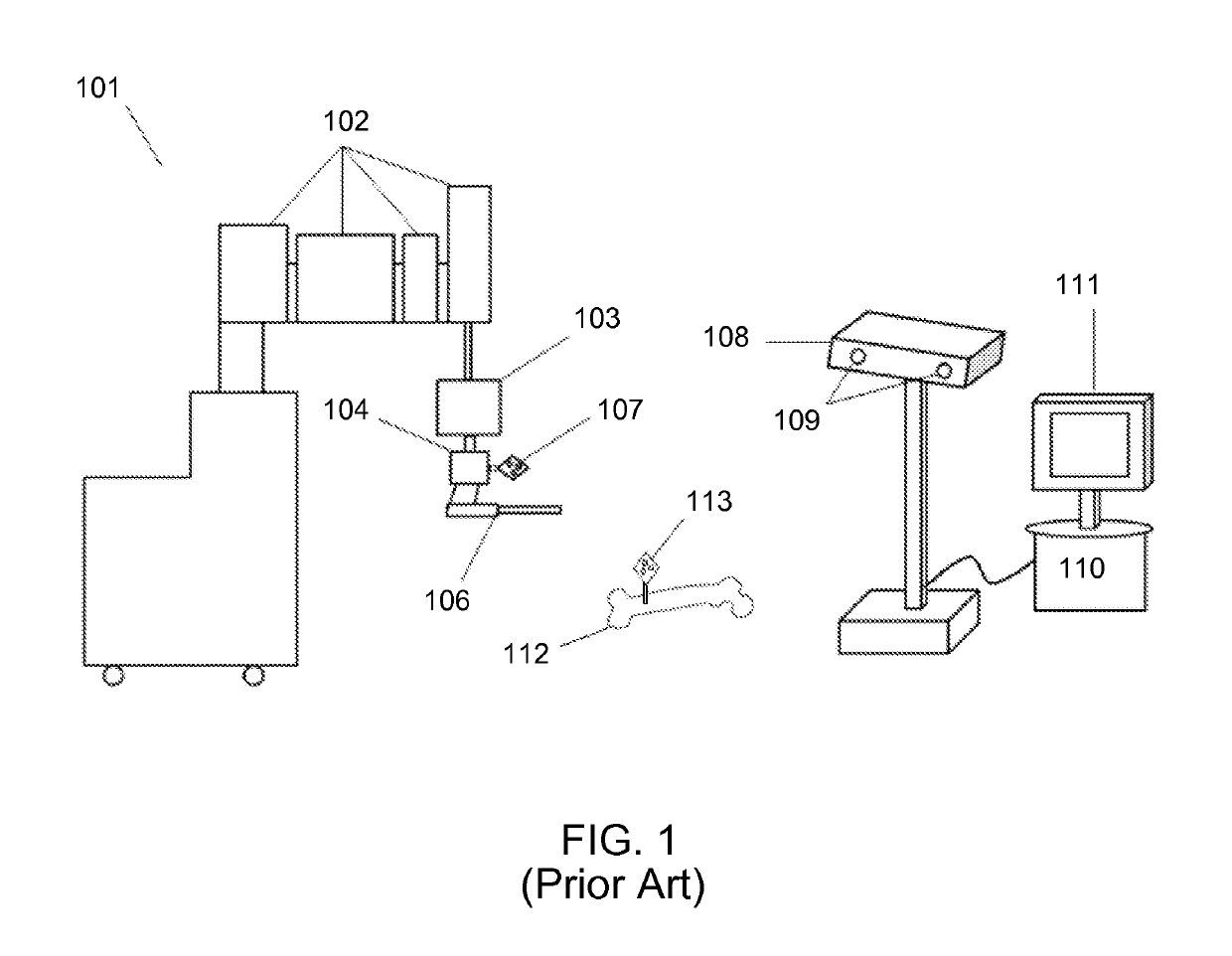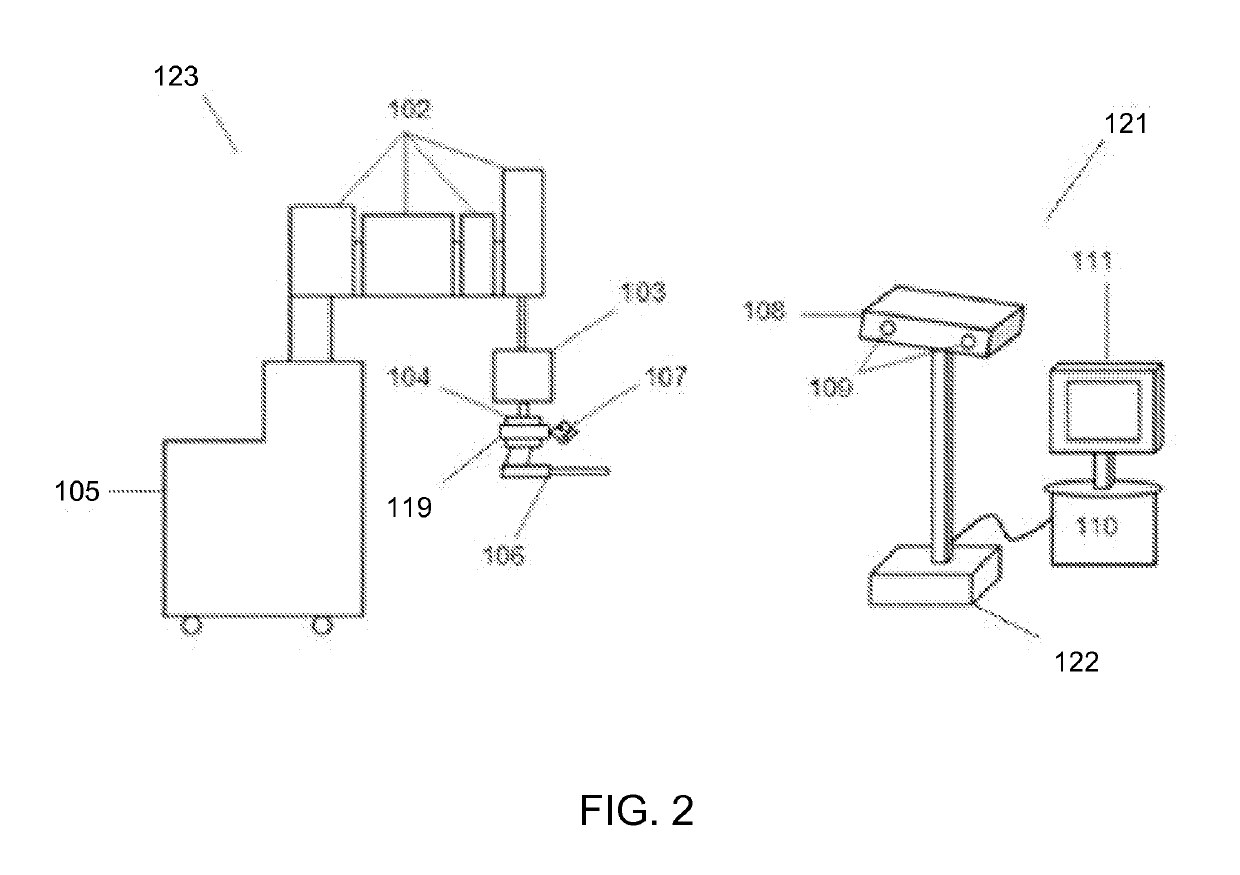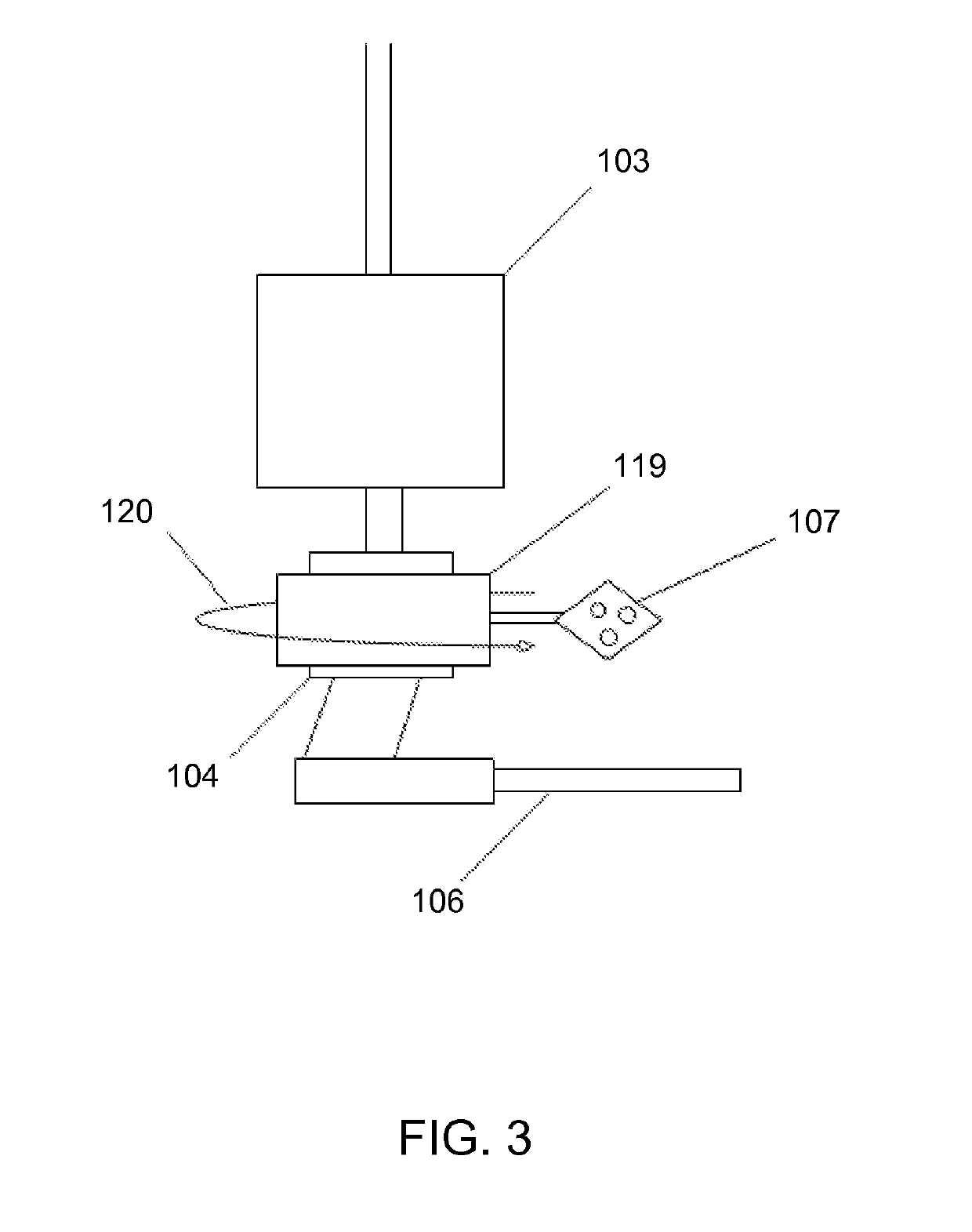Actively controlled optical tracker with a robot
a robot and optical tracker technology, applied in the field of optical tracking, can solve the problems of not being suitable for operation in the operating room, the disruption of the los between the optical signal and the optical receiver, and the need to maintain a line of sight (los), so as to achieve the effect of minimizing the disruption of the los
- Summary
- Abstract
- Description
- Claims
- Application Information
AI Technical Summary
Benefits of technology
Problems solved by technology
Method used
Image
Examples
Embodiment Construction
[0038]The invention disclosed herein describes a system and process for the optical tracking of an object, and more particularly to an active controller device incorporated on a computer-assisted device that maintains the line of sight between a tracking array and an optical receiver.
[0039]It is to be understood that in instances where a range of values are provided, the range is intended to encompass not only the end point values of the range but also intermediate values of the range as explicitly being included within the range and varying by the last significant figure of the value. By way of example, a recited range from 1 to 4 is intended to include 1-2, 1-3, 2-4, 3-4, and 1-4.
[0040]As used herein, the term ‘tool’ may be any instrument capable of performing work on an external object. Tools illustratively include a probe, drill bit, laser, cutter, burr, saw blade, shears, forceps, dissectors, cautery hook, cautery spatula, scissors, retractors, graspers; as well as any assembly...
PUM
 Login to View More
Login to View More Abstract
Description
Claims
Application Information
 Login to View More
Login to View More - R&D
- Intellectual Property
- Life Sciences
- Materials
- Tech Scout
- Unparalleled Data Quality
- Higher Quality Content
- 60% Fewer Hallucinations
Browse by: Latest US Patents, China's latest patents, Technical Efficacy Thesaurus, Application Domain, Technology Topic, Popular Technical Reports.
© 2025 PatSnap. All rights reserved.Legal|Privacy policy|Modern Slavery Act Transparency Statement|Sitemap|About US| Contact US: help@patsnap.com



